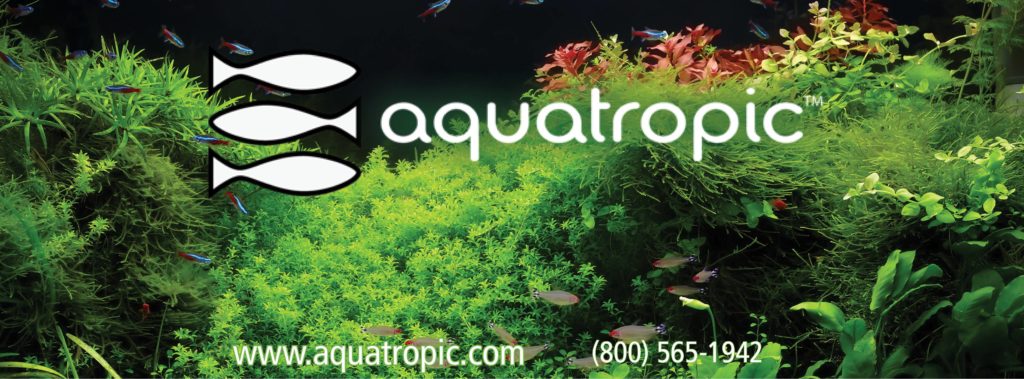
Sponsored Feature and tissue-cultured plant guide brought to you by AquaTropic
Story by Caitlin Lee,
AquaTropic Features Editor
Planted aquariums have never been more popular than they are today. Now, more than ever, aquarists new to the hobby are foregoing the traditional plastic foliage and bubbling treasure chests of yesterday in favor of a more beautiful and natural aesthetic. Whether it’s the carefully manicured landscapes of an Amano tank or the garden-like verdure of the Dutch style, the limiting factor for creating these beautiful aquascapes can often be the availability of the plants themselves.
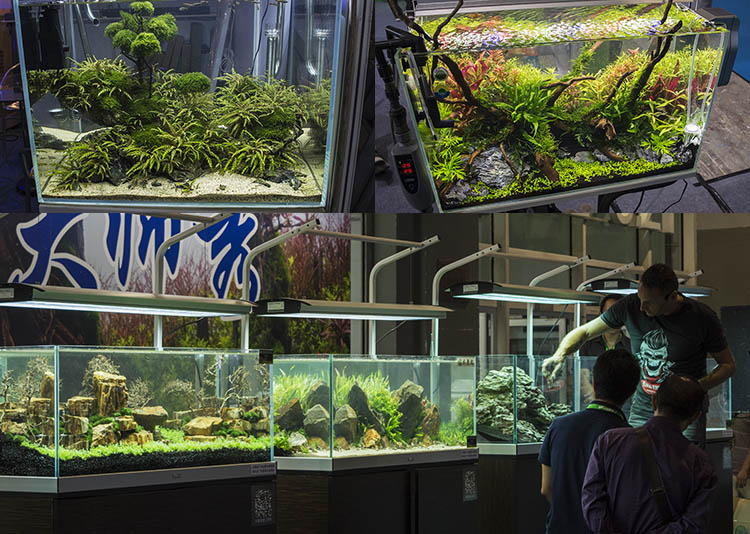
With the art of aquascaping taking the aquarium hobby by storm, planted aquaria have never been more popular
While aquarium magazines tend to highlight rare and exotic plants, the truth is that most of these species are seldom seen and only trade hands between a small number of aquarists. For the rest of us, we’re reliant on the plant selection found at our local fish stores, which can all too often be found wanting. Many retailers simply lack the facilities to stock and sell a truly diverse selection of aquatic plants, especially those with more demanding care requirements. This poses a problem for the aspiring aquascaper, but with the release of their new line of tissue-cultured plants, the horticulture experts at Tropica are helping to fill this void.
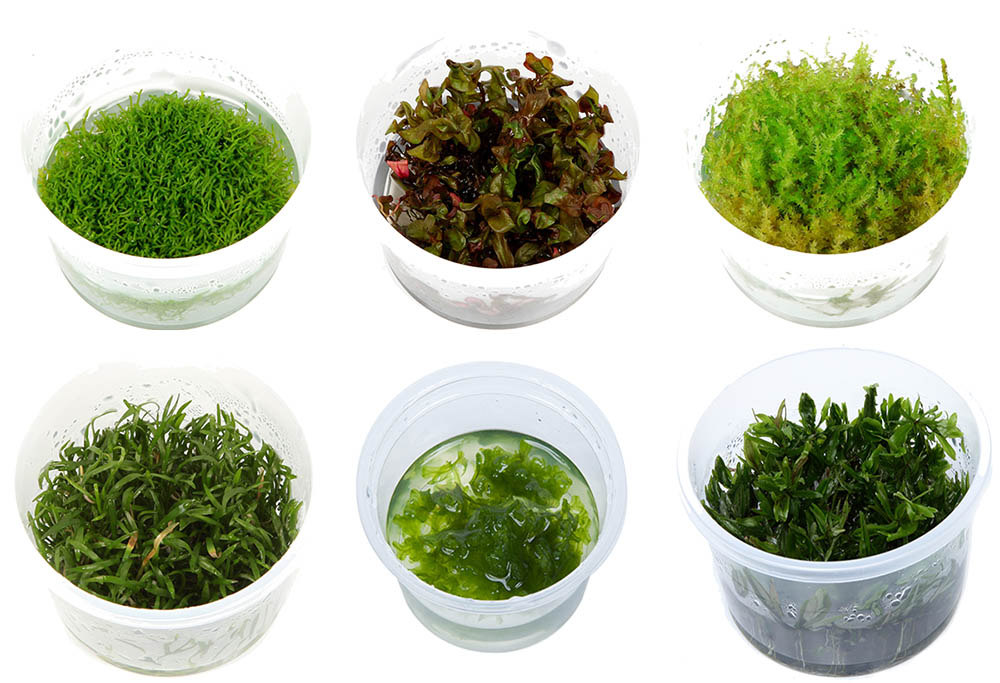
A selection of Tropica’s Tissue Cultured aquarium plants. Clockwise from top left: Riccia fluitans, Rotala macrandra, Vesicularia dubyana ‘Christmas’, Didiplis diandra, Monoselenium tenerum, and Lilaeopsis braziliensis
Marketed under the user-friendly “1–2–Grow!” label, this new line of plants isn’t grown from a seed or cutting as had been the norm for many years. Instead, Tropica uses patent pending technology where the plants are grown in a nutrient-rich liquid media with a sealed breathable lid. This technology, known as tissue culture (or T.C. for short) has been around for decades now, having originally been developed in the 1960’s by botanists looking to examine some of the fundamental questions of plant biology. It is already widely used in the orchid world to propagate and trade rare species and hybrids. Today, Tropica has implemented considerable advancements in technique and the methodology has moved outside the laboratory and into commercial plant production. The slow-growing Anubias was one of the first plants to benefit from this approach, but in recent years the nursery has applied this method to many other genera.
There are several advantages to tissue cultured plants. Since it only requires a tiny amount of material to create new plants, growth can be almost exponential, meaning that even an uncommon plant can be made abundant with relative ease. Since this technique is done under completely sterile conditions, the aquarist can be assured that there is zero chance for any problematic algae, bacteria or parasite being introduced—the same can be said for the dreaded pond snails that often accompany aquatic plants. For those keeping invertebrates such as shrimps or snails, the risk of an unwanted pesticide harming these delicate creatures is also eliminated. Setting Tropica apart, a major advantage of their new technology is that the plants are able to grow in their submersed form as opposed an emersed form using gel. This allows the plants to adapt to aquariums much quicker as it reduces the transition stage the plants generally undergo when being planted underwater.
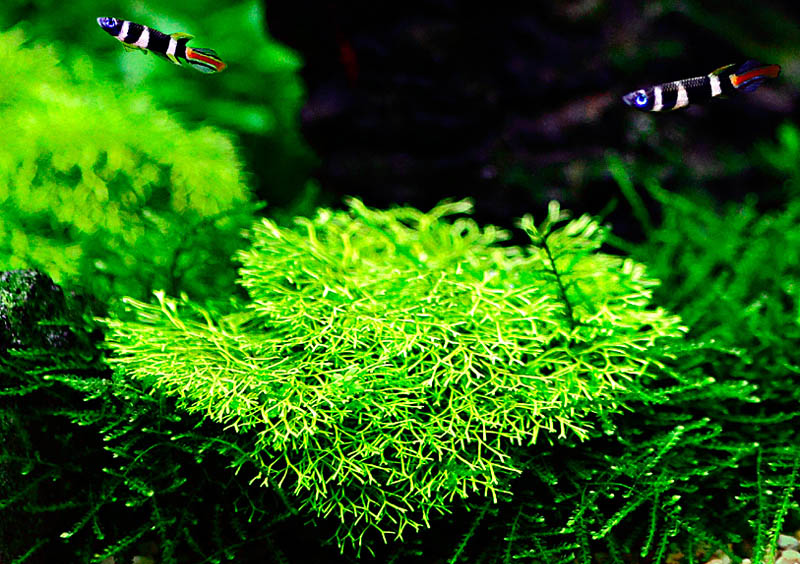
Even somewhat challenging species like Riccia fluitans readily adapt to aquariums when tissue cultured
But perhaps the most important advantage of this technology is the relative ease with which retailers can now carry a wide selection of plant species. So long as they remain safely ensconced within their plastic cups, tissue cultured plants can have a remarkably lengthy shelf life, often months long, with little risk of the kind of deterioration that can take place when a plant is first moved from a traditional nursery to an aquarium. With each passing year, we are seeing an increasing variety of species, many of which are challenging to keep, becoming more widely available.
Foreground Plants
Foreground plants can be some of the most demanding to successfully keep in an aquarium, and for this reason they are often underrepresented in aquarium stores. Without the essential requirements for high lighting and carbon dioxide being met, a species like Hemianthus callitrichoides “Cuba”(commonly known as Dwarf Baby Tears) can prove nearly impossible to keep, often quickly becoming overgrown with nuisance algae or simply disintegrating entirely. Growing this plant into the dense carpet commonly seen in Amano style tanks takes the right equipment and some dedication; the same can be said for other desirable foreground species, such as Glossostigma elatinoides, Elatine hydropiper, and Utricularia graminifolia, all of which can be relatively hard to come by due to the challenges retailers face when attempting to keep these species successfully growing while submerged in an aquarium.
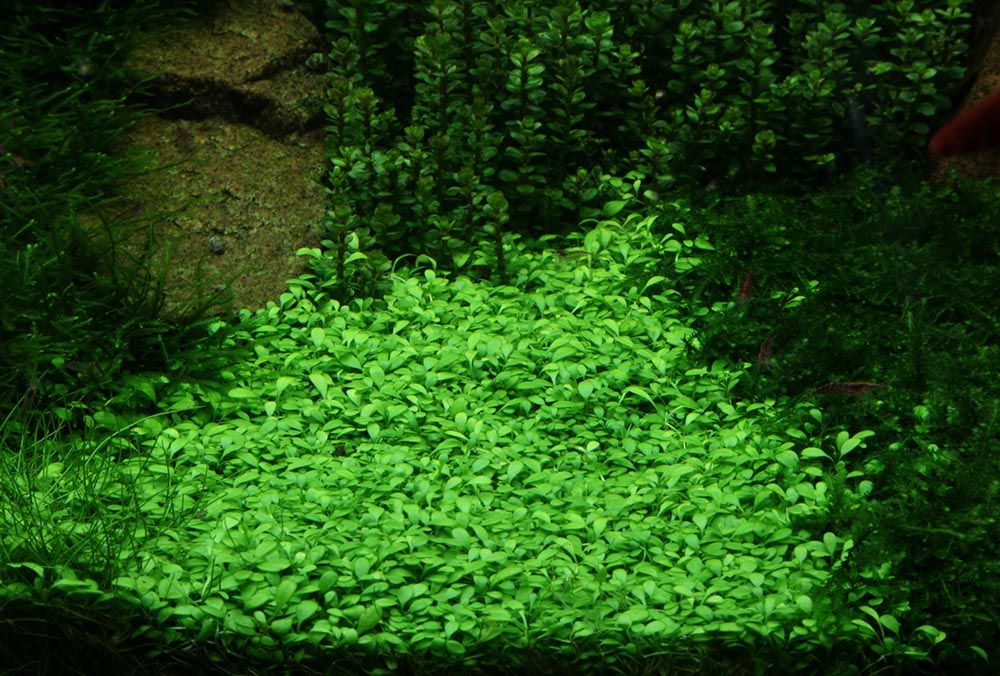
Tropica’s Tissue Culture plants make acclimating and growing delicate foreground plants (like Glossostigma) easier than ever
On the other hand, the “1–2–Grow!” tissue cultured specimens of these species grown by Tropica have proved far simpler to keep healthy, flourishing within the cozy confines of their cup. In this state, the plant has no issues acquiring the necessary carbon dioxide and nutrients needed for its metabolism, needing only an adequate amount of light to be provided. Another major advantage tissue culturing has is the relative ease of use when it comes time for planting—with traditional methods, cuttings of these species would be grown in fibrous rock wool, which can be quite difficult to remove from these rather delicate plants. By quickly washing off any remaining nutrient liquid, tissue cultured foreground plants can be gently teased apart, resulting in minimal damage to the plant and an easy aquascaping experience.
Stem Plants
Many stem plants are hardy and easy to grow, and for this reason they have been some of the most commonly seen species in retail stores. Included here are such mainstays as Rotala rotundifolia, Bacopa caroliniana and Hygrophila corymbosa. However, for other species, particularly the more brightly colored varieties, demanding requirements for light can result in specimens quickly falling apart, losing leaves from the bottom up until nothing remains but a bare stem. As with foreground plants, tissue culturing has allowed for many of these challenging stem species to become widely available.
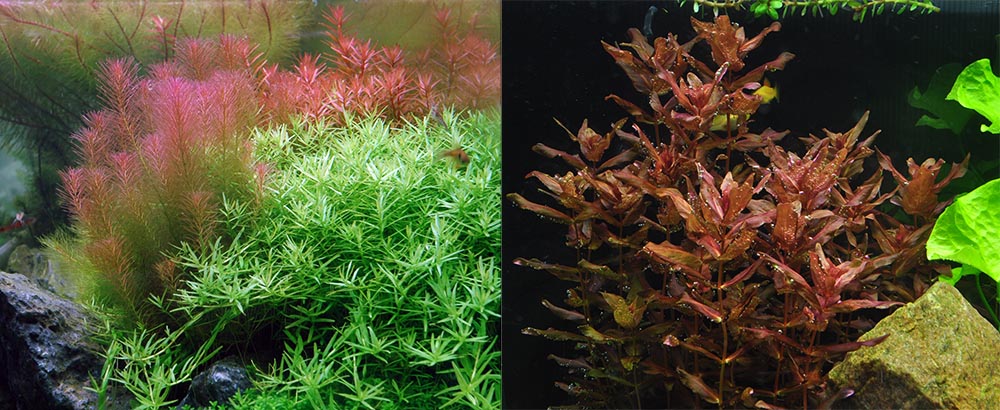
Rotala species, like R. wallichii (left) and R. macrandra (right) add a splash of color to high light aquariums
Rotala wallichii, a singularly demanding plant from Southeast Asia that only thrives under bright lighting, and Rotala macrandra from India, whose lovely crimson leaves are quick to disappear, are both expert level species that are made considerably easier thanks to “1–2–Grow!”. North America is home to a couple species that are becoming increasingly popular and available thanks to tissue culturing—Proserpina capalustris (known as Mermaid’s Weed) is a lovely plant that boasts distinctive feathery leaves and a brilliant red color under bright illumination, and Gratiola viscidula, a relatively new species for aquariums known as Short’s Hedge Hyssop, an interesting plant that sports particularly pointed leaves and which grows in short, bushy clusters.
Floating Plants
Another group of plants that is often overlooked and sparsely available are the so called “pleustonic” species which lead a floating existence at the water’s surface. These can add a very natural appearance to an aquascape, but some species pose a challenge by either potentially clogging filtration or by blocking light from reaching any plants kept beneath them. While the pest-like Duckweed (Lemna sp.) has turned many aquatic gardeners off to the entire concept of utilizing floating plants, there are an increasing number of other species with a more decorative appearance and a slower growth rate that are now being offered.
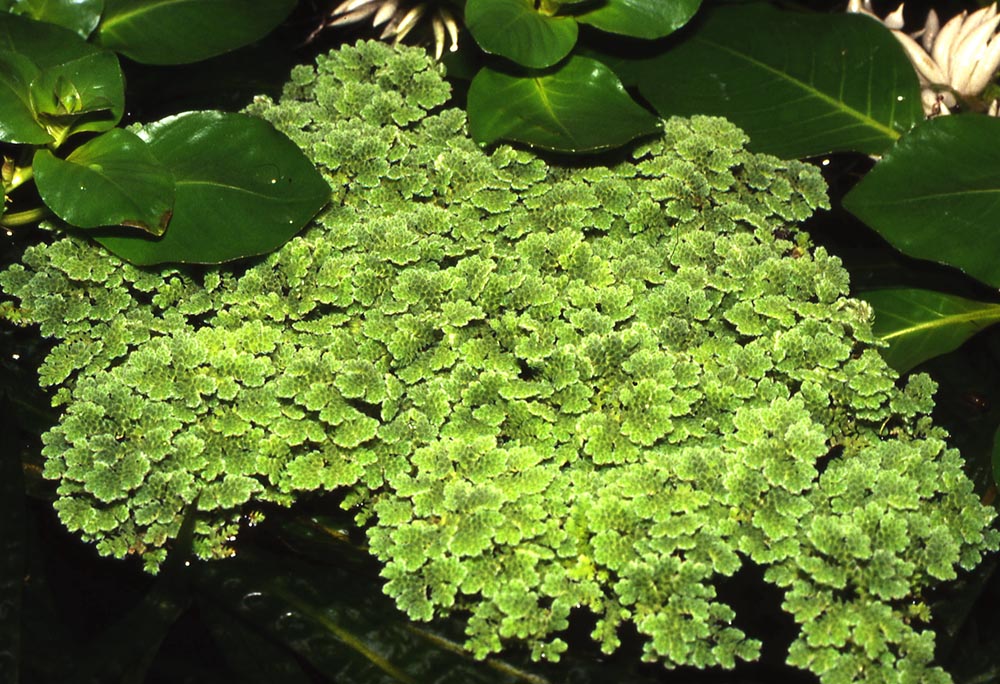
Floating plants like this Azolla filiculoides can be used to great in an aquascape, especially in an open-topped tank
Mosses & Liverworts
It wasn’t long ago that aquatic mosses and liverworts were almost unheard of in a planted aquarium, with Vesicularia barbieri (Java Moss) usually being the only widely available species. In recent years, one of the biggest trends in modern aquascaping—particularly with smaller or hardcape-dominated layouts—is using a greater variety of these plants. But, despite their popularity, it can still be hard to locate many of the newer species and cultivars, even from specialty sources. Thankfully, tissue culture continues to make these far more obtainable, and, given the ease with which these plants can be stored, expect to see many more varieties available through local aquarium retailers.
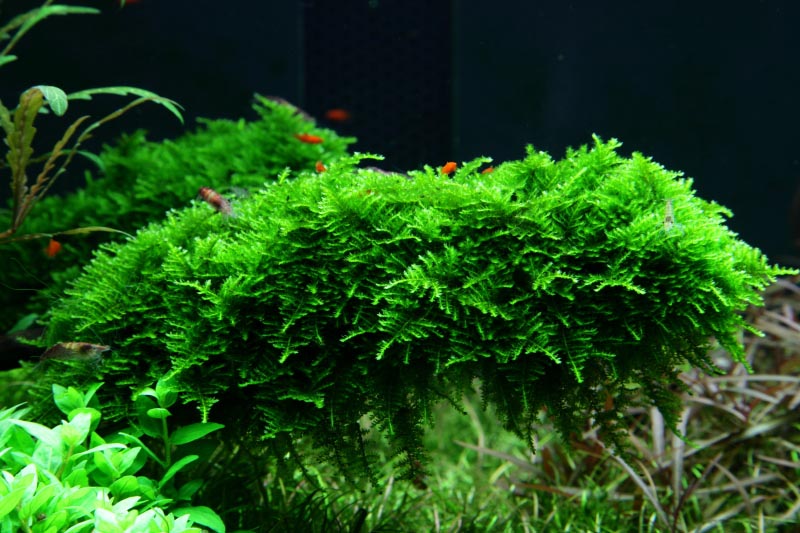
Mosses, like this lush pillow of Christmas Moss (V. dubyana ‘Christmas’) are increasingly important elements in well-aquascaped tanks
Liverworts are a poorly known group of little economic importance, but they are fascinating from an evolutionary perspective, as they represent one of the most ancient forms of terrestrial plant life. Many are shaped quite like a moss, but those which are cultured for aquarists are generally “thallose”, growing as thin, flattened plants that branch heavily. One of the most popular examples is Riccia fluitans, a species popularized by the legendary Takashi Amano. This delicately shaped species can grow either as a floating matter or more frequently, attached to the hardscape and is capable of “pearling” when kept under ideal conditions. Monosolenium tenerum (commonly known as Pellia, not to be confused with the genus Pellia) is another widely available species which appears like a bulkier version of Riccia and can grow into relatively large, bushy shapes.
One of the biggest advantages to using tissue cultured mosses is how much easier they are to aquascape with. Rather than the awkward wire grating that these plants are often grown on, the “1–2–Grow!” line of mosses can be quickly rinsed and pulled apart for a quick and effortless decorating experience. Aside from the ubiquitous Java Moss, other members of the genus Taxiphyllum offered are a distinctive species with an upright growth form known, appropriately enough, as Flame Moss and a flat, branched variety called Spiky Moss. The fern like fronds of Vesicularia dubyana (Christmas Moss) and Vesicularia ferriei (Weeping Moss) can provide a sharp contrast to these, especially in an aquascape devoted to bryophytes. Arguably the most beautiful of the bunch is Fontina lisantipyretica, often referred to as Willow Moss, which develops bright green tips and tends to fare best at cooler temperatures.
More To Come…
The future looks bright for tissue culturing in the aquarium trade. With each passing year we see more and more varieties being offered and a greater number of retailers recognizing the many advantages of selling these plants.There are now dozens of species being produced by Tropica in this manner, covering nearly every popular plant type in the hobby. With the ease with which these can be kept alive and healthy in stores, it’s now possible for a wider range of plants to be made available to a larger number of aquarists, which can only help to increase the growing interest in the beauty of planted aquariums.
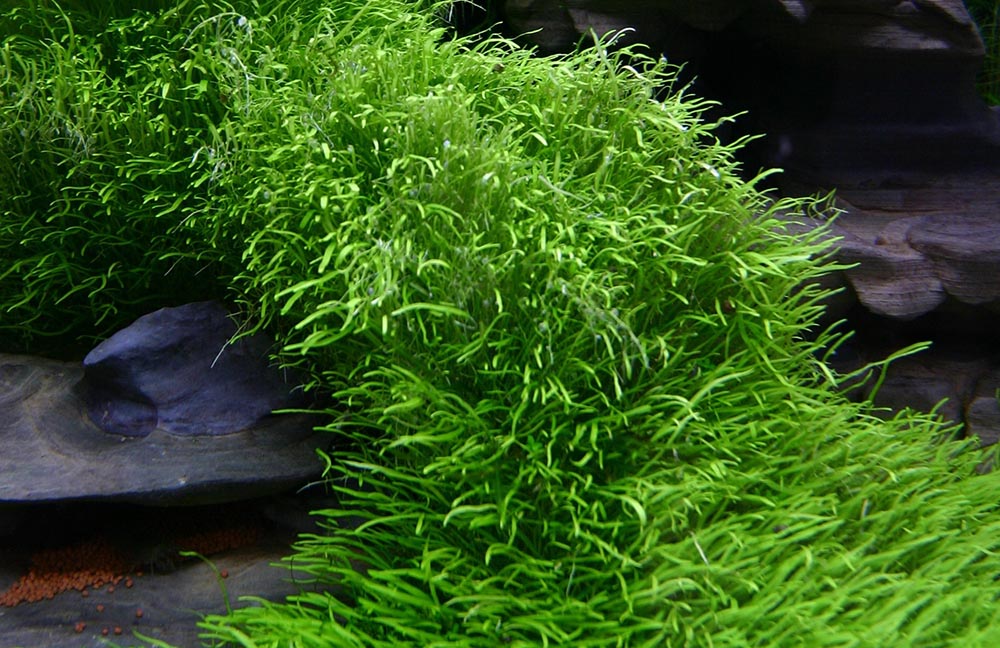
Tropica is continuing to make species like the once rarely seen Utricularia graminifolia are more widely available to both retailers and hobbyists
Learn more about Aquatropic’s selection of aquatic plants by visiting www.aquatropic.com/products/plants, and check out Tropica’s informative guide to aquascaping with their tissue culture plants here.

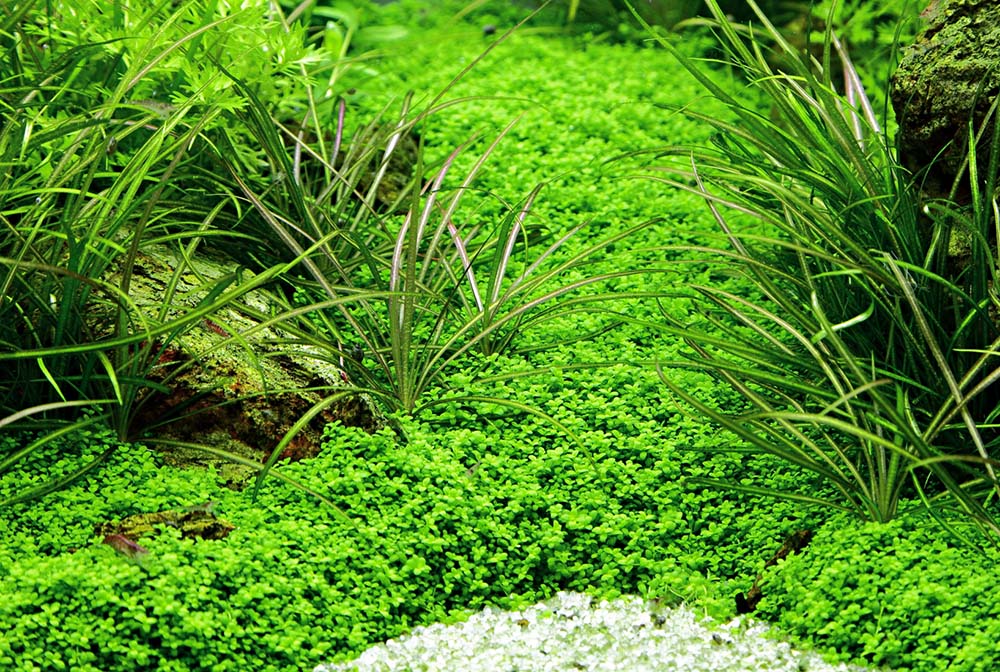






The tank examples are magnificent.I would appreciate if you could answer a few of my questions so that I might enter a new phase of my hobby.
1) How large are the tanks?
2)Where can I purchase the brackets that hang the lights?
3)What size and brand are the LED lights?
4)Is CO2 being used?
Thank you for your attention. Lynn Sumerson
Hello Lynn,
Thank you so much for your interest in the article and the tanks. Please the answers to your questions below and let me know if you have anymore questions.
1) We do not have one set size tank that we use, but typically they are 10 gallons and larger.
2) The brackets needed is all dependent on the type/brand of lighting you use. There are some universal brackets, but it is best to check with the manufacturer specs first. Aquaray by Tropical Marine Centre has some great brackets that are very easy to use.
3) Aquatropic recommends using Tropical Marine Centre’s Grobeam lighting. For our display tanks we use the “Grobeam 500 Natural Daylight.” GroBeam uses 6500K natural daylight CREE® XP-E Compact PowerLEDs* emitting over 800 lumens, making it especially suitable for planted aquariums and for enhancing the colors of your tropical fish.
4) CO2 is used because it is the main nutrient for plants, however, the amount of CO2 needed is dependent on the plant species. Tropica has great CO2 systems. We recommend Tropica’s System 60 for all starter aquariums up to 60L. For nano-aquariums, regardless the level of ambition, we recommend System Nano.
I hope this information is useful
What are those cool looking black and white fish with the Riccia?!
Hi John,
Thanks for your interest in the article and photos!
Those are called Clown Killifish (Epiplatys annulatus)…they are great schooling fish for planted and/or community tanks.
Please let us know if you have any other questions